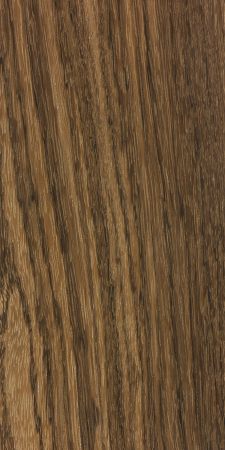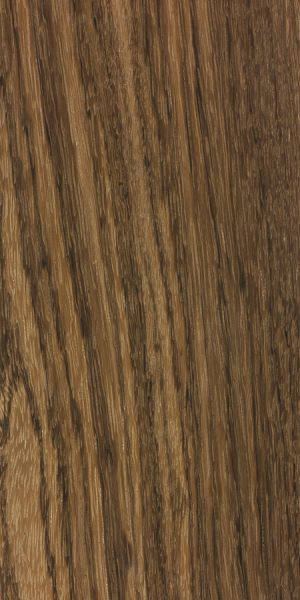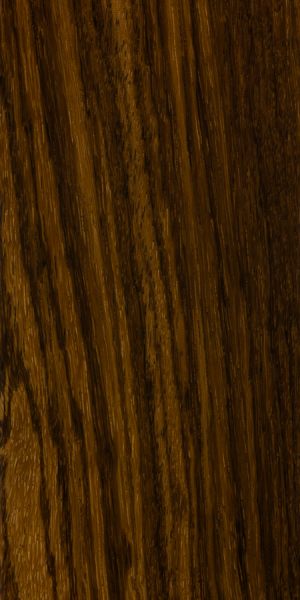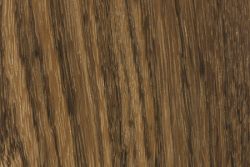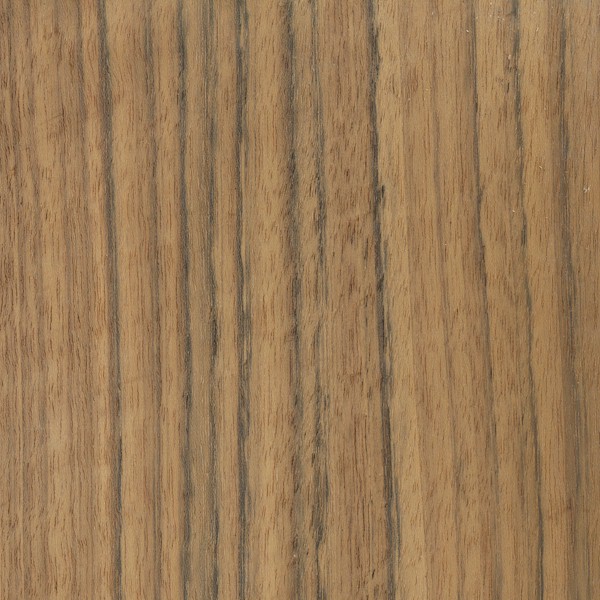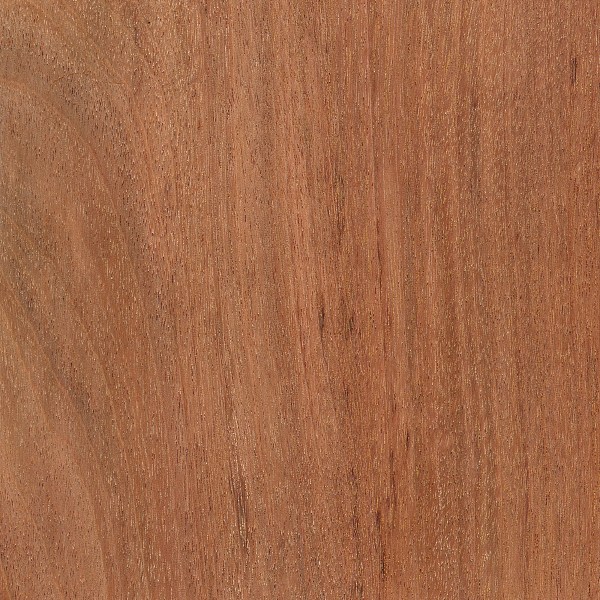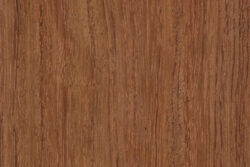Common Name(s): Mutenye, benge
Scientific Name: Guibourtia arnoldiana
Distribution: Central West Africa
Tree Size: 65-100 ft (20-30 m) tall,
2-3 ft (.6-1.0 m) trunk diameter
Average Dried Weight: 49.8 lbs/ft3 (800 kg/m3)
Specific Gravity (Basic, 12% MC): .64, .80
Janka Hardness: 1,650 lbf (7,340 N)
Modulus of Rupture: 22,090 lbf/in2 (152.3 MPa)
Elastic Modulus: 2,696,000 lbf/in2 (18.60 GPa)
Crushing Strength: 11,590 lbf/in2 (79.9 MPa)
Shrinkage: Radial: 5.2%, Tangential: 9.0%,
Volumetric: 12.6%, T/R Ratio: 1.7
Color/Appearance: Heartwood is a golden to reddish brown, frequently with darker stripes. Can sometimes have wavy or figured grain pattenrs. Grayish yellow sapwood is visibly lighter.
Grain/Texture: Grain is usually straight to slightly interlocked. Uniform fine to medium texture. Good natural luster.
Rot Resistance: Rated as moderately durable regarding decay resistance, with good resistance to insect attack, though only moderately resistant to termites.
Workability: Generally easy to work with machine or hand tools on sections with straight grain, though interlocked grain can cause tearout. Silica sometimes present in the wood, dulling cutting edges. Gums present in the wood can sometimes cause difficulty in gluing.
Odor: No characteristic odor.
Allergies/Toxicity: Besides the standard health risks associated with any type of wood dust, no further health reactions have been associated with mutenye. See the articles Wood Allergies and Toxicity and Wood Dust Safety for more information.
Pricing/Availability: Not commonly seen in North America, mutenye should be in the mid to upper range for an imported hardwood. It has seen growing popularity in use for acoustic guitar back and sides.
Sustainability: This wood species is not listed in the CITES Appendices or on the IUCN Red List of Threatened Species.
Common Uses: Veneer, flooring, furniture, cabinetry, musical instruments (guitar backs), turned objects, and other specialty wood objects.
Comments: Mutenye is sometimes sold interchangeably with ovangkol (Guibourtia ehie), and the two are indeed very closely related botanically (Guibourtia genus)—as well as sharing similarities in both appearance and mechanical properties. Both woods are also related to bubinga (Guibourtia spp.) and their use in acoustic guitars has increased since the 2017 CITES changes that restricts international trade in both bubinga and rosewoods.
Images: Drag the slider up/down to toggle between raw and finished wood.
Identification: See the article on Hardwood Anatomy for definitions of endgrain features.
Related Content:

